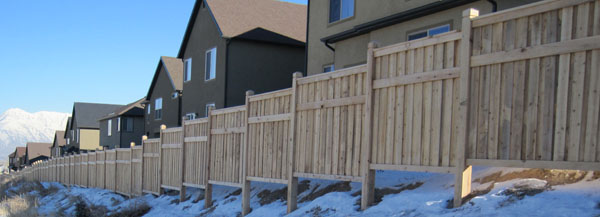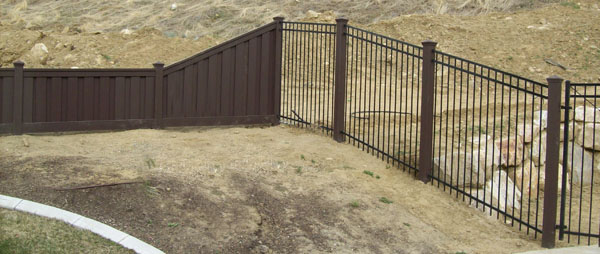It is rare to have a yard that is perfectly level. Typically there are three options for dealing with unleveled ground. First, leveling the ground before the fence is installed. If there is not much of a slope then this option is probably the best for you. It will not cost very much to hire someone to level small dips or holes in your yard. However, if you are climbing a steep hill or even a gradual slope then you will want to consider sloping or stepping.
Stepping
There are some fence types that cannot adjust to grade very easily. This is mostly because the fence comes in large panels rather than slats. In order to adjust to a grade, then, these fences have to “step” down a hill. While this method works for bringing a fence down a grade, it is not frequent because there is a gap between the bottom of the fence and the ground. See the images below for examples of a “stepping” fence.
Fences that require Stepping: Simtek, Fortress Estate, Fortress Classic





